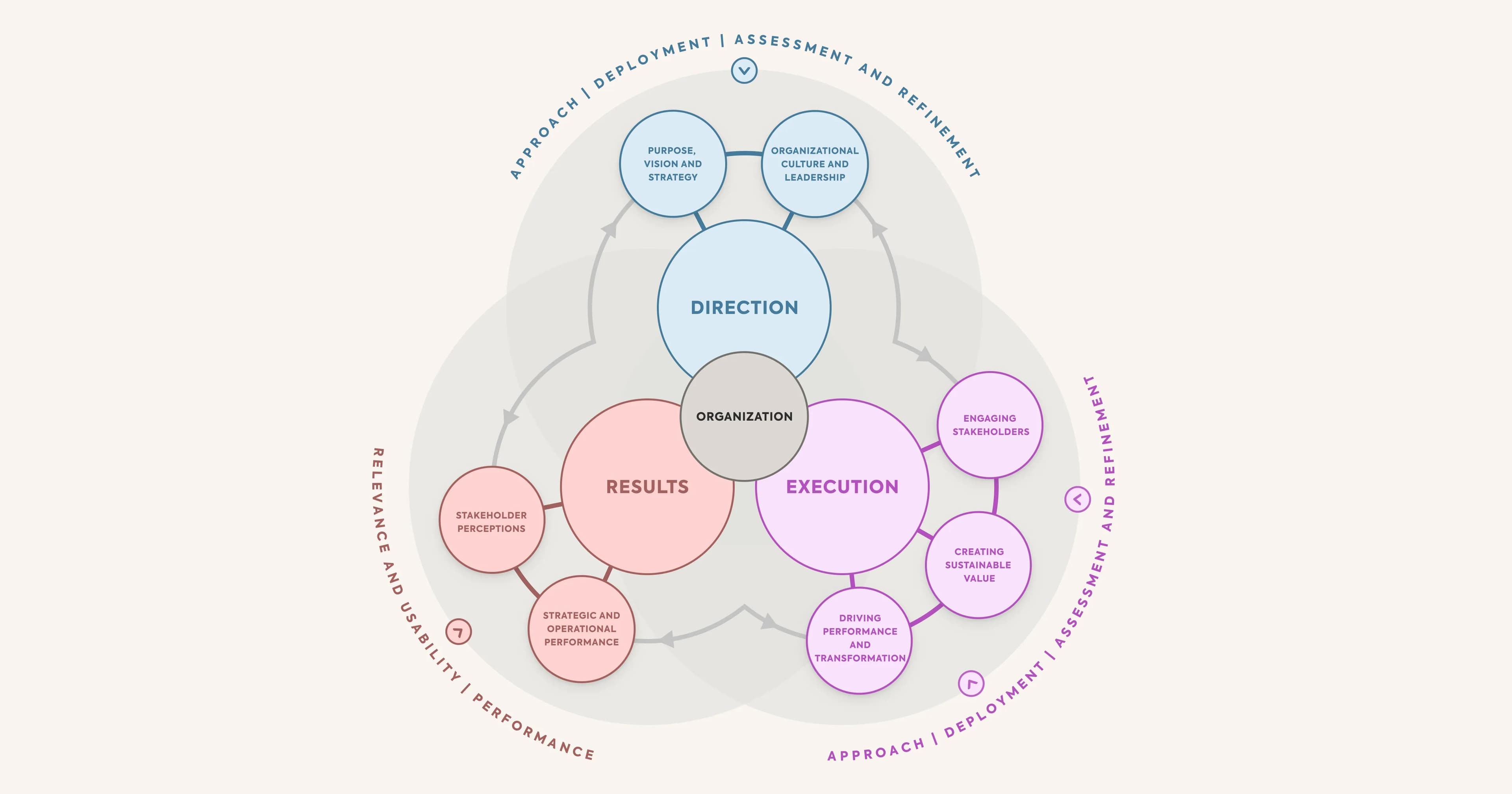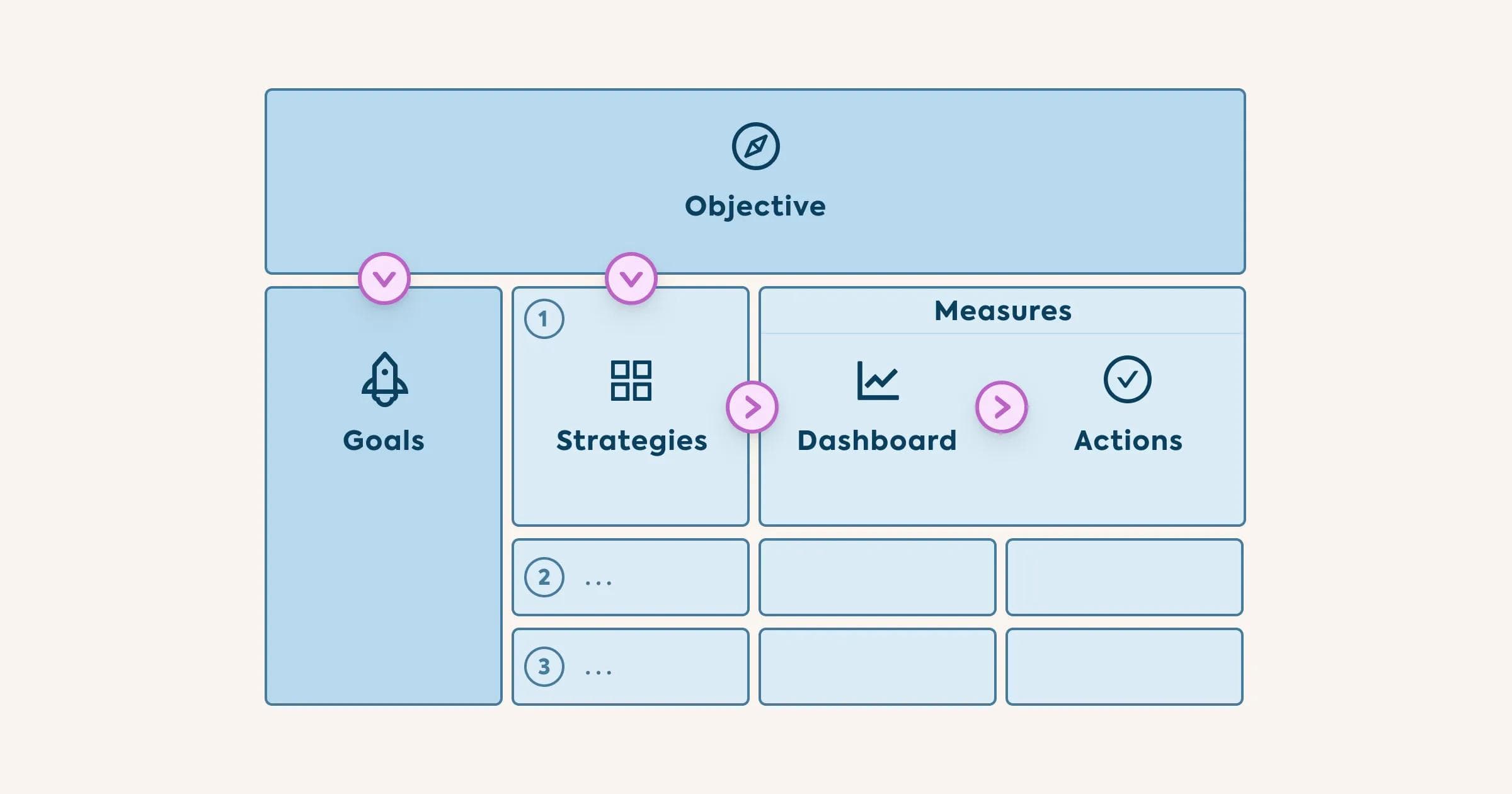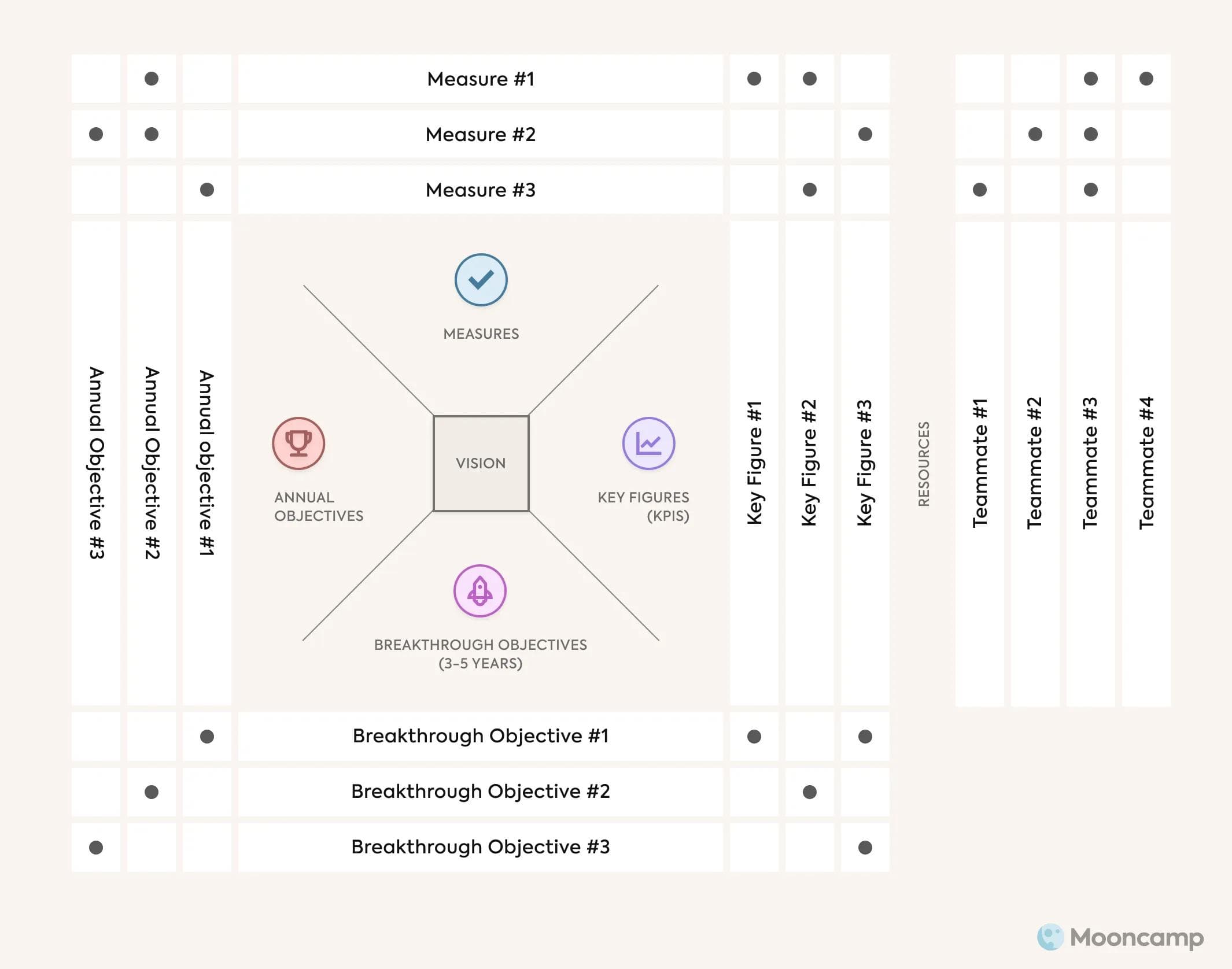Strategy Execution: The 7 Step Process [+ Study Findings]

Whether it's a new marketing plan or a complete corporate strategy, it's almost always a challenge for companies to follow up the planning process with strategy execution.
In this article, we explain exactly what strategy execution is all about, how to implement strategies successfully, and which mistakes are better avoided.
What to expect:
- What does strategy execution mean? Definition
- How do you implement a strategy?
- Strategy implementation in 7 steps
- Problems with strategy implementation: 6 common mistakes and how to avoid them
- What is the key to implementation success? Models and study results
- Conclusion: Thinking about implementation from the start
- Strategy execution – FAQ
What does strategy execution mean? Definition
The term “strategy execution” (or “strategy implementation”) is self-explanatory. It refers to the process of putting a strategic plan into action to achieve specific objectives. In other words, strategy execution is the art of getting things done.
Strategy execution as part of strategic management
Execution is also a sub-step in the holistic strategic management process. Specifically, this comprises five phases:
- 1️⃣ Setting strategic objectives,
- 2️⃣ analyzing the current situation,
- 3️⃣ designing a strategy,
- 4️⃣ executing the strategy, and
- 5️⃣ evaluating progress.
Strategy execution, the fourth step, takes the most time.
How do you implement a strategy?
A well thought-out company strategy is the basis for successful strategy execution, but it alone does not ensure that everything runs smoothly. It takes a bit more than that:
- 🧑 People: Leaders alone cannot successfully execute a new strategy. It requires a team that understands the plan and has all the skills it needs to successfully put it into action.
- 💸 Resources: It is important that resources, whether financial (e.g., costs for a project) or non-financial (e.g., working time), are effectively allocated and provided.
- 📋 Organization: Everyone in the company should know their roles in the implementation process. It must be clearly defined and communicated who will take the lead and be the contact person for questions.
- ⚙️ Systems: Implementation should be supported with judiciously selected management tools, technologies, and systems.
- 🏆 Culture: A corporate culture in which employees receive all necessary information at all times and are involved mitigates the stress that the introduction of new strategies can mean for individual teams.
How to: Strategy implementation in 7 steps
Without a clear plan, the leap from strategy planning to strategic execution is practically doomed to failure. Additionally, it requires the necessary capacity, resources and support from employees.
Here is a summary of the seven steps a team or company must take to successfully execute strategy and achieve defined strategic objectives.
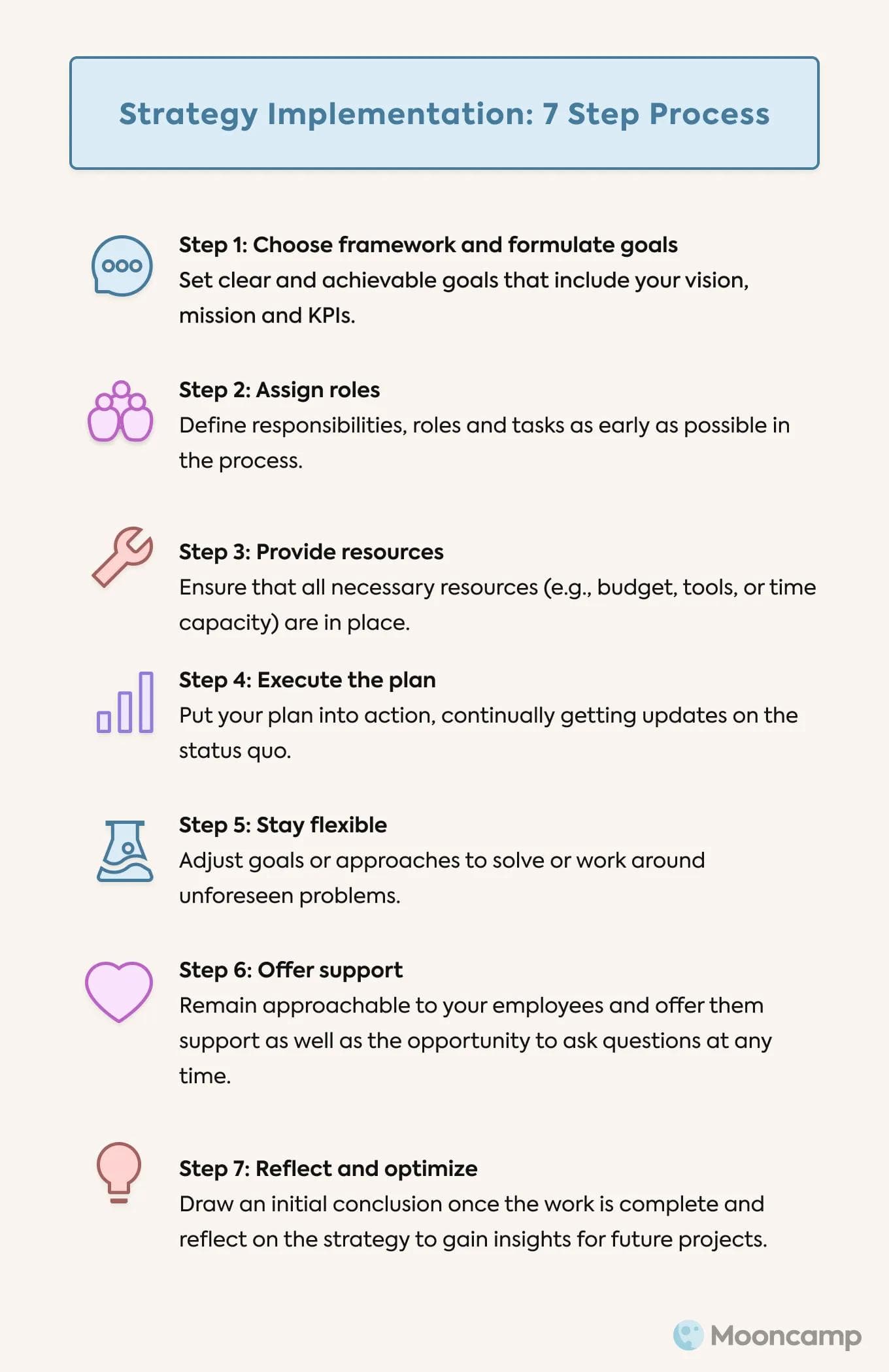
1. Choose framework and formulate goals
The two most important components of successful strategy execution are clearly articulated goals and a process to help the team achieve them. The goals should include the company's vision, mission and KPIs. The more explicitly the goals are defined, the easier it will be to work towards them.
💡 Tip: Goals are always clearly formulated and achievable when they are SMART. Check out our blog post on SMART goals to learn more.
A management framework such as Objectives and Key Results (OKR), Balanced Scorecard (BSC), or Management by Objectives (MBO) can help paint a clearer picture of strategic plans and keep them simple and to the point. In addition, frameworks like Balanced Scorecard or OKRs help to manage the implementation, coordinate activities, stay up-to-date and check if you are still on the right track.
2. Assign roles
To implement a strategy effectively and efficiently, clear roles and responsibilities are needed. Everyone in the team needs to know what they have to do, what they are responsible for, and who works with whom on what. It should also be clear who will take the lead and what deadlines must be met. All of this should be clarified as early as possible so that no area of responsibility is overlooked.
💡 Tip: It can be helpful to hold an extra meeting in which you go through all roles and clarify open questions. This provides transparency and gets all team members on board.
3. Provide resources
Once all roles have been assigned, the next step is to provide the resources needed to implement strategic initiatives – for example, financial resources, tools or time capacities. It is not always easy to get an overview (and to keep it). But it helps to,
- keep an eye on the end of the project right from the start,
- define a clear project scope,
- identify and list available resources in the team,
- share the plan for the implementation process with all stakeholders and solicit opinions.
4. Execute the plan
The goals are set, everyone involved knows what they need to do, and the resource planning is in place? Then it's time for the actual execution. As the team works to achieve the established strategic goals, it may be useful to solicit updates and provide interim reports at certain milestones in the process – for example, right after the start, in the middle, or in the final stages of the process. Challenges that have been overcome or mistakes that have happened are also good starting points to discuss progress.
5. Stay flexible
Once the implementation process has started, obstacles and unforeseen problems will inevitably arise. Then it's a matter of responding flexibly to change and adjusting goals or approaches to solve or work around problems.
💡 Tip: You can find out more about what exactly constitutes agile project management and which agile methods can help you overcome challenges and react flexibly to changes in the plan on our blog.
6. Offer support
Throughout the implementation process, once roles are distributed, leaders should trust everyone to do their jobs independently and work toward common goals. Micromanagement is out of place, slows down the strategy process and, at worst, can lead to a loss of motivation.
Regular feedback, support in the event of problems and the opportunity to ask questions at any time, on the other hand, have an encouraging and motivating effect. Managers should therefore take on more of a coaching role in strategy execution, keep an eye on the “big picture” and empower employees.
7. Reflect and optimize
Implementing a strategy is a lengthy process. Therefore, points should be defined to mark when the initial implementation process is complete and all tasks have been completed or have been advanced and set in motion to the point where a first conclusion can be drawn.
Once one of these points is reached, it is time for a debriefing or retrospective in which successes (and failures) in the implementation process are discussed, reflected upon, and evaluated. The results are noted and form the basis for future strategy projects. This way, mistakes can be ironed out and continuous improvement is initiated.
Strategy execution problems: 6 common mistakes and how to avoid them
Speaking of mistakes, no major project runs completely without obstacles. It's normal for mistakes to happen – and it's instructive. To make sure you're as prepared as possible, we've summarized six of the most common mistakes here, including useful tips on how to avoid them on your next project.
1. The plan is too extensive or nonsensical.
If organizational goals are set too complex, too vague or too ambitious, or if strategic planning is simply too extensive and opaque, it can get in the way of implementation.
✅ The solution: A management framework that helps you formulate goals and provides rules brings clarity, structure, and focus – even in the planning phase. OKRs are increasingly becoming the “new standard” in this regard, but the SMART method can also be useful in formulating achievable, relevant goals.
2. The plan is followed too strictly.
No plan, no matter how good, survives a reality check without adjustments. It is simply not possible to foresee every eventuality. If it is nevertheless strictly adhered to, the implementation is doomed to failure.
✅ The solution: Managers and employees should keep an open mind, adapt to the circumstances, overcome unexpected obstacles, and seize opportunities. Staying agile, finding creative solutions to problems, and seizing opportunities to optimize strategy is what makes a successful strategy implementation and sets a company apart from the competition.
3. The communication is not clear enough.
Information is not shared transparently enough, and executives fail to present the strategic plan in a way that is easy to understand – even though they seem to be communicating it non-stop through various channels. This quickly creates a feeling of helplessness and being overwhelmed in the team.
✅ The solution: When it comes to communicating strategies, it's not just the frequency that matters, but rather how information is presented and conveyed. The simpler, the better the message gets across to employees. Discussions, team meetings and messaging tools are also far more effective for communication than one-way channels such as newsletters, emails and the like.
4. Responsibilities are not clearly defined.
The team does not know exactly what it is supposed to do, how it is supposed to fulfill its tasks, and how it can execute the strategic requirements. As a result, implementation stalls before it has really begun.
✅ The solution: Clearly distributed responsibilities and tasks prevent misunderstandings and give employees the feeling that they are contributing an important part to the overall result. It is important that everyone is given some responsibility and has all the resources available to complete the assigned tasks.
5. There is a lack of alignment.
Even when all goals have been sensibly set and the strategy fits, implementation may stall because there is a lack of alignment. This leads to conflicts in collaboration, lack of priorities, and the strategic goals are forgotten.
✅ The solution: There should be a clear division of who works on which strategic goal and when. It is also helpful to repeatedly remind employees of the strategy and what they are working toward. Overarching strategies should be translated into easily understandable individual goals for all areas of the company so that everyone understands them and knows what has priority.

6. Progress cannot be tracked properly.
Many organizations fail to establish the right performance metrics or use confusing Excel spreadsheets to track their progress in the implementation process. This may work for small teams, but it quickly becomes confusing.
✅ The solution: It is better to use tools that help you with tracking. This makes monitoring company performance more transparent and all information is clearly collected and evaluated in one central location. This facilitates joint alignment, communication, collaboration, and makes the entire endeavor more efficient.
What is the key to implementation success? Models and study results
Of course, there are also numerous methods, models and tools that make strategy implementation easier and provide helpful guidelines. Two of the best-known models are McKinsey's 7-S model and Scott Edinger's three Cs of strategy implementation.
Implementing strategies with McKinsey's 7-S model
The strategy and management consulting firm McKinsey has developed a model with seven factors that are necessary for successful strategy execution.
These are divided into “hard” and “soft” elements, with the hard elements being relatively easy to identify and influence, while the soft elements are less tangible and harder to shape.
The hard elements are:
- Strategy: The strategy a company follows to secure an advantage over competitors in the market.
- Structure: The hierarchy and organizational structure of a company
- Systems: All the processes, tools and activities involved in daily structures
Soft elements include:
- Style: The corporate culture as a basis for cooperation
- Staff: All employees in the company
- Skills: The skills and special competencies of the team
- Shared Values: The shared basic values in the company
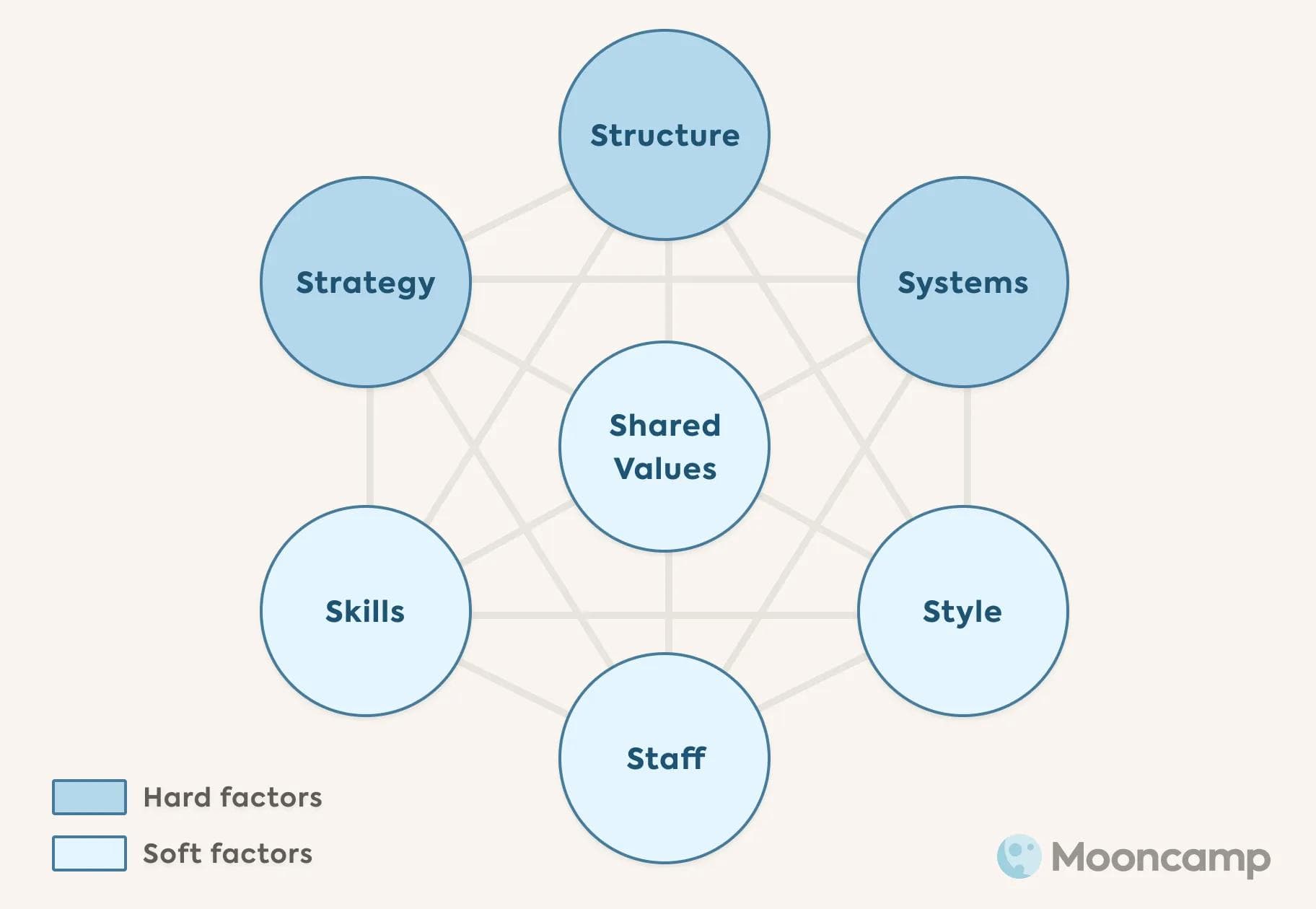
Overall, all elements in the model are interconnected. If one element changes, this always has an impact on the others. The shared values are at the center of this. Ideally, all elements are in harmony with each other.
The three Cs of strategy implementation
Business consultant and author Scott Edinger has also summarized three steps that should be taken for effective strategy execution in the form of the three Cs of implementing strategy: clarity, communication and cascade.
Let's take a closer look at what is hidden behind the three Cs.
- Clarity: A successful business strategy should be formulated in such a way that not only managers but also all employees understand it.
- Communication: The organizational strategy should be communicated at all levels of the organization through various media (e.g., internal blogs, podcasts, meetings, discussions). It should become clear how each employee can individually contribute to successful strategy execution.
- Cascade: Even if the company's strategy as a whole has already been communicated, it should be ensured that it is really understood everywhere, in all areas and by all employees. (Senior) managers are particularly called upon in this step: They must have understood the strategy, be able to communicate it to their team (e.g., in team meetings or individual coaching sessions), and be able to transfer it to their own area.

Strategy execution study: The factors that make the difference
So much for theory – but what does practice look like? A study by management consultants McKinsey clearly shows how difficult it is to put strategies into practice: Fewer than half of the respondents (a total of more than 2,200 executives from 900 companies in all industries took part) said that most or all of their change efforts over the past five years had achieved their original goals and made a lasting difference.
Above all, most companies seem to be weak when it comes to conducting effective meetings, identifying and solving problems, and providing feedback to employees.
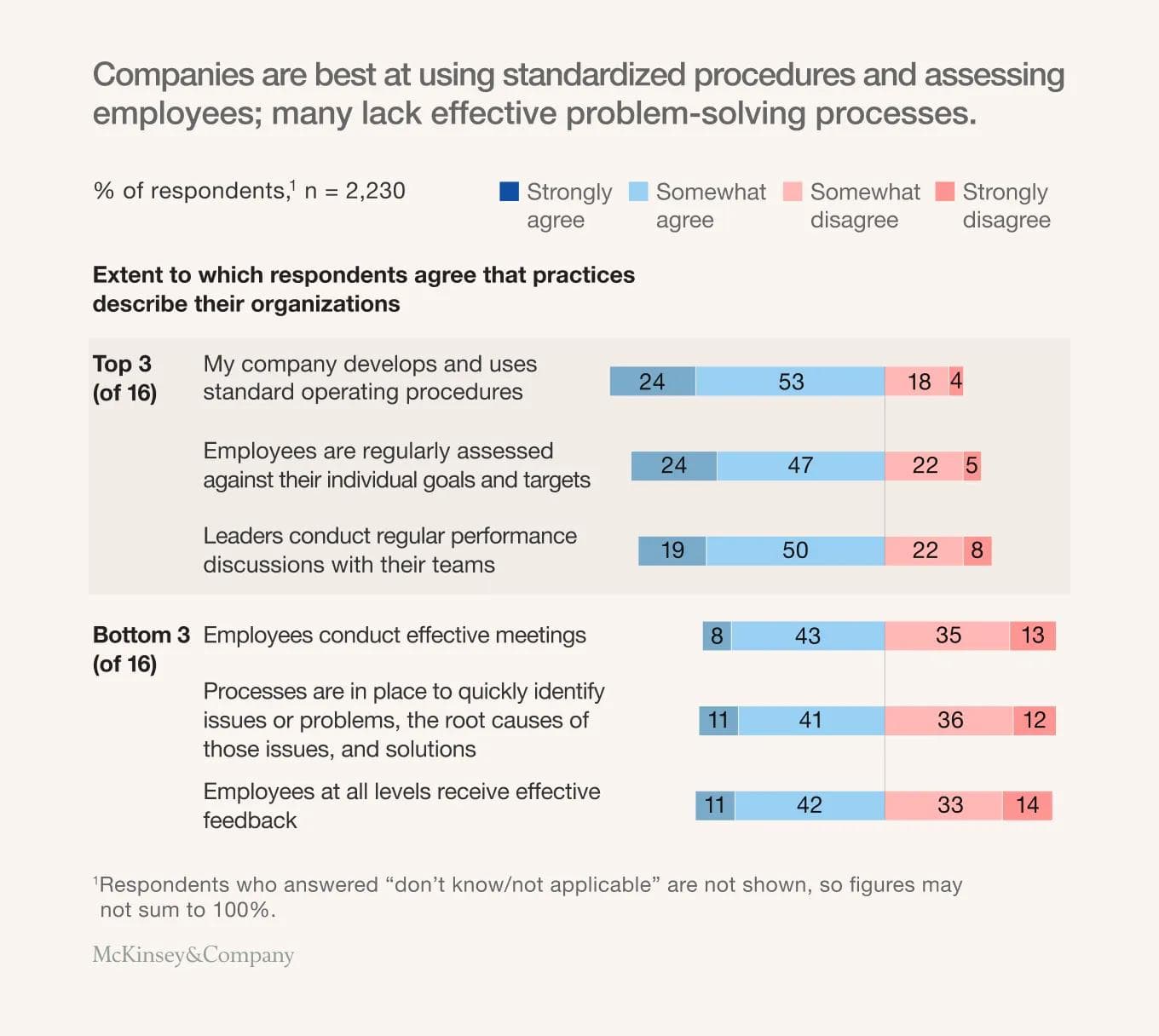
For those organizations that were able to successfully implement strategies, it was company-wide buy-in and commitment to change, clearly established priorities, and sufficient resources and capabilities that ultimately made the implementation a success.
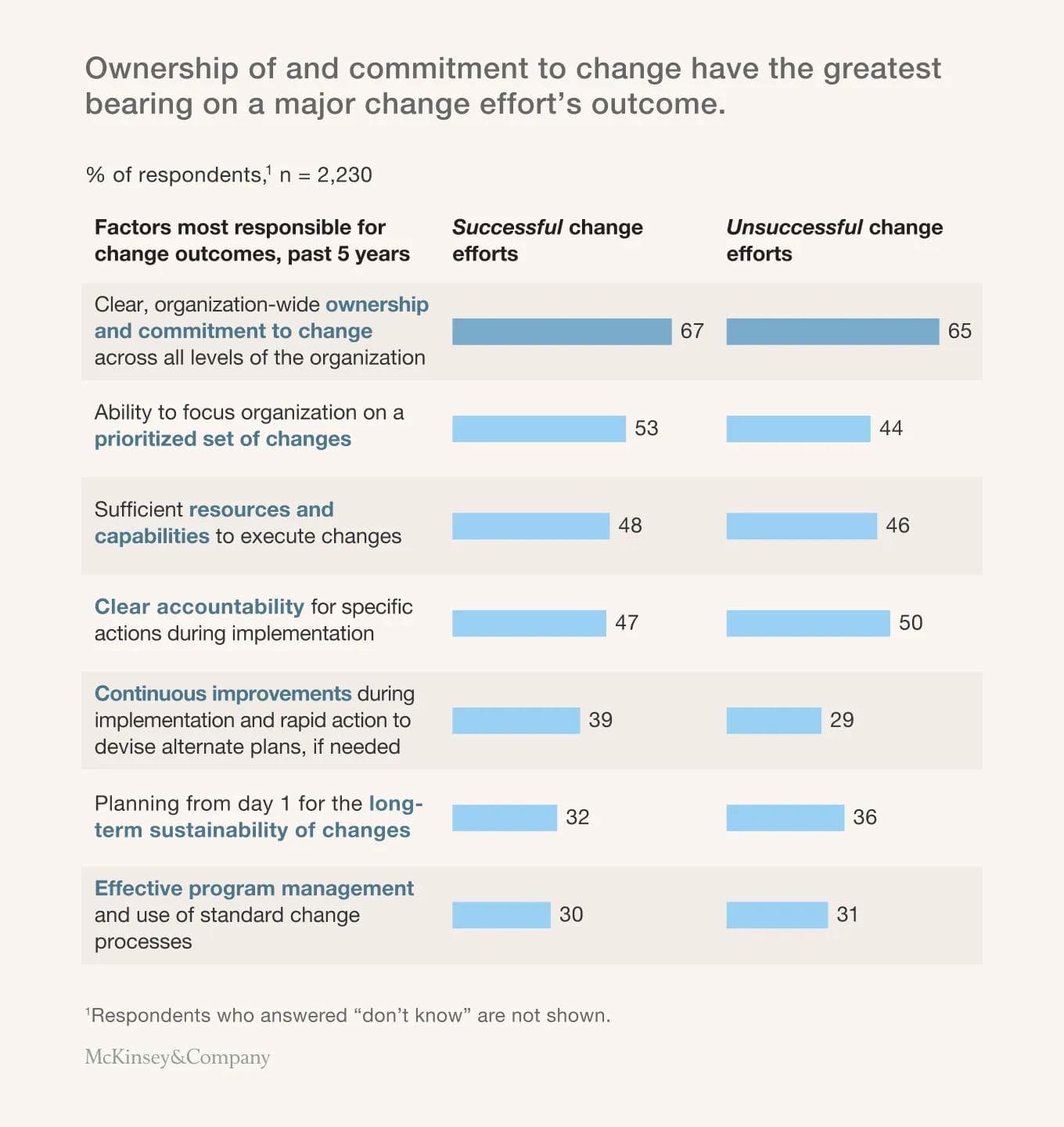
Conclusion: Thinking about implementation from the start
In summary, implementing a strategy is anything but simple. It's a complex task that offers potential for numerous mistakes and presents companies with significant challenges time and time again.
However, many of the most common problems in strategy execution can be solved or avoided relatively easily if you rely on a strategic framework right from the start that accompanies you all the way – and supports you in both planning and execution.
After all, only those who have already taken into account during strategic planning whether a strategy can actually be implemented later on will be successful with it in the long run.
Strategy execution – FAQ
What makes a good strategy?
A good strategy is characterized by focusing on the essentials and translating the company's overarching vision into clear, measurable and achievable goals. It does not take decisions away from the employees, but creates a framework within which they can work in a self-determined manner.
What is needed for successful strategy implementation?
Successful strategy implementation requires, among other things, a team that understands the plan and has the right skills, sufficient resources, a good organization, wisely chosen tools and systems, and an open corporate culture.
Why is strategy execution important?
If you develop a strategy without considering whether it can be implemented, you will inevitably fail. Therefore, it is essential to think about execution from the very beginning.
When is a strategy successfully implemented?
A strategy is considered to have been successfully implemented when it is anchored in the minds of all employees, the first tasks have been advanced to the point where the foundation for further development has been laid and the first implementation phase has been completed.
